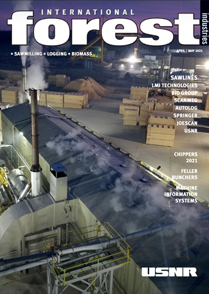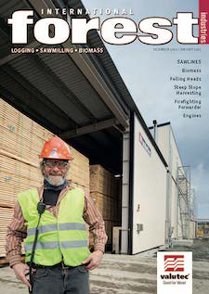EDITOR’S COMMENT ISSUE 81
Prices correcting, but maybe not entirely
The COVID-19 pandemic has been devastating.
But for those exposed to forest industries, there has been something of a silver lining in the form of lumber prices. Removing the collapse in pricing at the onset of the pandemic in March, prices were up some 270% from pre-pandemic levels to early May at an astronomical $1,690 per 1,000bdft.
The key drivers of the price surge relate to wood’s primary use in house building.
First, COVID pulled the rug out from under all travel plans, leaving those fortunate enough to retain job security with excesses of both cash and time that were converted into home maintenance and improvement projects around the first world.
Second, the economic devastation has been immediate and catastrophic at a scale that has eclipsed even major depressive events of the past century. Low interest rates that had not really recovered from the most recent crisis in 2008 went lower still, with several large economies contemplating moving into negative territory. This was reflected in mortgage rates, which prompted many planning to build a new home in a few years to lock in once-in-ageneration low interest payments.
Meanwhile, supply has been hit in many places because of COVID. Where primary production hasn’t been affected, international transportation has been at least partly disrupted. When supply chains have been functioning, capacity has remained constrained – it takes about two years to build a contemporary sawmill.
The pullback in pricing experienced over the past month – lumber was down more than a third – has been seen by many as inevitable and likely to continue until we are resting back at pre-pandemic levels, as vaccinated first-world citizens start to travel again and inflationary pressures start to rear their heads.
However, while these factors will play a part, they have little to do with the current correction.
As an old saying goes: the best cure for high prices is high prices. That is, price levels have finally reached a point where they have put people off their home improvements. Admittedly, this has coupled with the ability to travel – even if it’s just domestically – to shelve DIY projects.
But people will return from summer holidays and pick up projects with lumber costs now at more affordable levels, though still up more than 100% on February last year. And despite inflation being a more realistic part of central banking conversations recently, rates remain low and will do for as long as policy makers can afford to protect the recovery. If anything, those seeking mortgages may discover an increased sense of urgency as the prospect of higher rates features more regularly in nightly news bulletins.
Yes, DIY patterns will soon return to normal and interest rates will rise – assuming mindbendingly expensive stimulus packages work (and they already are) – but most expect these increases to arrive in 2022.
Moreover, those increases will be accompanied by a rise in industrial building projects and a mandate to ‘build back green’ across the globe. Wood, as a renewable building material increasingly proving its suitability for taller commercial structures, is in pole position to benefit. One could then argue rising interest rates will come hand-in-glove with rising commercial demand to levels unknown.
No one has a crystal ball and it is fair to say uncertainty has become a certainty. But there are enough possibilities on the demand side of the equation to suggest elevated prices, compared at least to pre-pandemic levels, are here to stay in the near-term and potentially much, much longer.
Enjoy
Chris Cann




